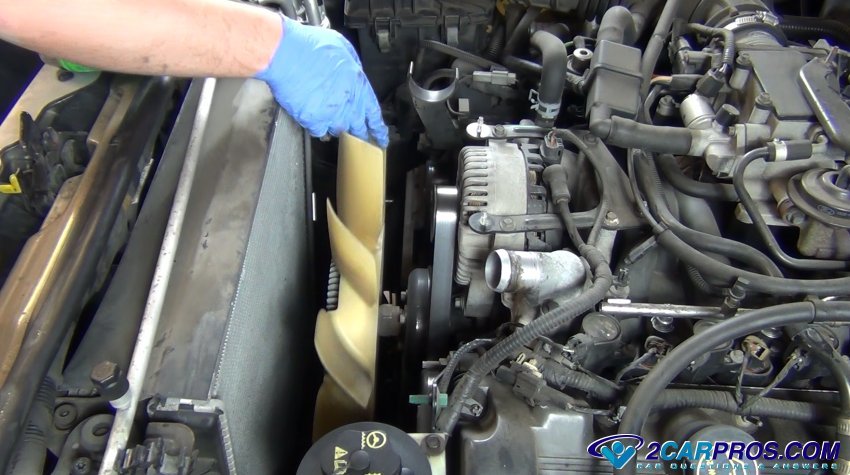The Best Guide To Fan Clutches
Table of Contents8 Simple Techniques For Fan ClutchesSome Ideas on Fan Clutches You Need To KnowFascination About Fan ClutchesThe Fan Clutches Diaries
Engine fan with viscous drive A fan clutch is a thermostatic engine cooling fan that can freewheel at low temperatures when cooling is not required, permitting the engine to heat up much faster, relieving unneeded load on the engine. As temperatures increase, the clutch engages so that the fan is driven by engine power and moves air to cool the engine.This conserves power, since the engine does not have to fully drive the fan. Nevertheless, if engine temperature increases above the clutch's engagement temperature level setting, the fan becomes completely engaged, therefore drawing a greater volume of ambient air through the vehicle's radiator, which in turn serves to keep or lower the engine coolant temperature level to an acceptable level.
This is easier to accomplish since the engine is mounted longitudinally, with the belt accessory parts mounted dealing with the radiator. The fan is installed on the crankshaft pulley or among the accessory sheaves (e. g. the water pump pulley) and will spin in between the radiator and the engine, drawing air back through the radiator and blowing it over the engine.
In contrast, in a front-wheel drive lorry, the engine is normally mounted laterally, with the crankshaft and generally all the major device shafts parallel to the front axle, so regarding directly drive the transaxle; a fan mechanically mounted on an accessory wheel would blow sideways and would not deal with the radiator.
The conversion of mechanical energy to electrical energy and back to mechanical rotary power with a fan motor is less effective than a direct mechanical connection, but this is more than compensated by higher control of an electrical fan through electronic thermostatic controls which can turn the fan entirely off when the engine temperature level is below the setpoint.
Not known Incorrect Statements About Fan Clutches
Some clutches are electronically controlled (rather of bi-metallic strip). These supply the prospective to control the level of engagement depending on any number of inputs. Typical managing factors might include engine oil temperature, transmission oil temperature, coolant temperature level, Air Conditioning system pressures and ambient air temperature.
When you consider an automobile cooling system, the very first thing that likely comes to mind is your radiatoror perhaps your cooling fan. The oft-overlooked doesn't get a heap of credit or attention, but it's a vital piece of the cooling formula in numerous cars. It assists your cooling system run efficiently and your engine run effectively.
A fan clutch is a temperature-controlled coupling between the water pump shaft and the fan which allows the fan to be functional at low speeds and detached at higher speeds. This allows the engine to run more effectively by getting rid of the load that the fan put on it. So how does it work? It truly depends on the a fantastic read style of fan clutch you select.
Non-thermal clutches run entirely based upon the shaft speed of the water pump. At low and idling speeds, the clutch permits the fan blade to turn at practically a 1:1 ratio. At high speeds, the silicone fluid within in the clutch will lose its capability to transfer the energy from the shaft to the fan clutch body (and for that reason, the fan) and the fan is then enabled to practically free-wheel, removing its load from the engine.
However, non-thermal clutches are a lower-cost alternative than thermal-style clutches. The thermal fan clutch runs in response to underhood temperatures. As hot air blows across the radiator, it heats up a thermal spring installed at the front of the clutch. As the spring is heated up, it turns and allows valve ports to open within the clutch.
Fan Clutches for Beginners

This fan style turns the fan at 70-90 percent of the shaft speed when engaged for increased cooling. When disengaged, it turns the fan at 25-35 percent. It's used with deeper-pitch fans (2Â 1/2 of pitch), and works well with higher operating rpm. Severe duty thermal fans turn the fan at 80-90 percent of the shaft speed when engaged and 20-30 percent when disengaged.
This style of fan clutch runs like a thermal clutch, but the ECM/PCM signal manages the level of engagement of the EV helpful hints clutch. fan clutches. This engagement process is eventually managed through the ECM/PCM by the following input variables: Coolant Temperature level, Intake Manifold Temperature Level, Transmission Oil Temperature, A/C Pressure and Engine Oil Temperature Level.
Like all components, fan clutches will wear out and require changed. According to Hayden, here are some indications your fan clutch may require replaced: Fan spins excessively when engine is stopped (3 or more times when hot engine is turned off). Poor A/C performance at idle or low vehicle speeds.


Some Of Fan Clutches

The Fan Clutch is a crucial part of your cooling system. Its drive shaft connects to the water pump. Then, the fan connects to the clutch real estate. The fan clutch's job is to manage when the fan comes on and off. It offers air flow when needed. It likewise lowers drag on the engine when not required - fan clutches.